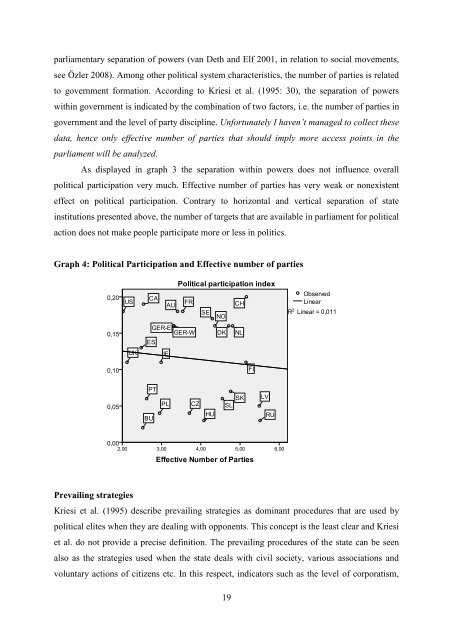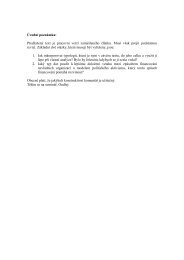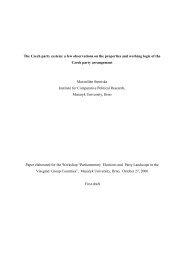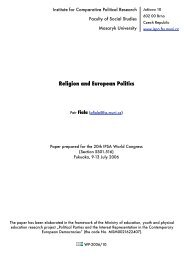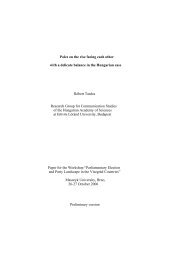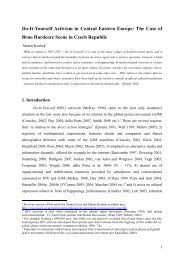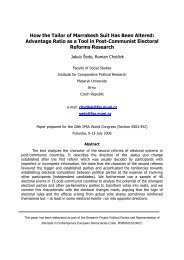CONTEXTUAL DETERMINANTS OF POLITICAL PARTICIPATION
CONTEXTUAL DETERMINANTS OF POLITICAL PARTICIPATION
CONTEXTUAL DETERMINANTS OF POLITICAL PARTICIPATION
You also want an ePaper? Increase the reach of your titles
YUMPU automatically turns print PDFs into web optimized ePapers that Google loves.
parliamentary separation of powers (van Deth and Elf 2001, in relation to social movements,see Özler 2008). Among other political system characteristics, the number of parties is relatedto government formation. According to Kriesi et al. (1995: 30), the separation of powerswithin government is indicated by the combination of two factors, i.e. the number of parties ingovernment and the level of party discipline. Unfortunately I haven’t managed to collect thesedata, hence only effective number of parties that should imply more access points in theparliament will be analyzed.As displayed in graph 3 the separation within powers does not influence overallpolitical participation very much. Effective number of parties has very weak or nonexistenteffect on political participation. Contrary to horizontal and vertical separation of stateinstitutions presented above, the number of targets that are available in parliament for politicalaction does not make people participate more or less in politics.Graph 4: Political Participation and Effective number of partiesPrevailing strategiesKriesi et al. (1995) describe prevailing strategies as dominant procedures that are used bypolitical elites when they are dealing with opponents. This concept is the least clear and Kriesiet al. do not provide a precise definition. The prevailing procedures of the state can be seenalso as the strategies used when the state deals with civil society, various associations andvoluntary actions of citizens etc. In this respect, indicators such as the level of corporatism,19


